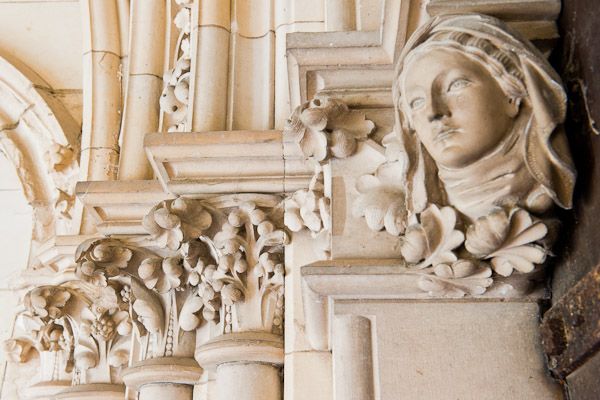Illustrated Dictionary of British Churches - Victorian Gothic Definition
History and Architecture
- Aisle
- Altar
- Ambulatory
- Angel Roof
- Apophyge
- Apse
- Arcade
- Arch
- Archivolt
- Base
- Battlement
- Bay
- Belfry
- Bell Tower
- Bellcote
- Bench End
- Board Bell Turret
- Body
- Boss
- Box pew
- Bracket
- Broach Spire
- Buttress
- Canopy
- Capital
- Cartouche
- Chancel
- Chancel Arch
- Chancel Screen
- Chantry
- Chapel
- Chapter House
- Choir
- Clerestory
- Cloister
- Communion Rail
- Compound Column
- Consecration Cross
- Corbel Head
- Crossing
- Crypt
- Early English
- Easter Sepulchre
- Effigy
- Fan Vaulting
- Font
- Font cover
- Funerary Helm
- Gallery
- Gargoyle
- Gothic
- Green Man
- Grotesque
- Hatchment
- Herringbone
- Hogback Tomb
- Holy Water Stoup
- Hunky Punk
- Jesse Window
- Kempe Window
- Lady Chapel
- Lancet
- Lectern
- Lierne
- Lych Gate
- Misericord
- Monumental Brass
- Mullion
- Nave
- Ogee
- Organ
- Parclose Screen
- Parish Chest
- Pendant
- Perpendicular Gothic
- Pew
- Pinnacle
- Piscina
- Poor Box
- Poppy Head
- Porch
- Priest's Door
- Pulpit
- Purbeck Marble
- Quire
- Rebus
- Reliquary
- Reredos
- Retable
- Romanesque
- Rood
- Rood Loft
- Rood screen
- Rood Stair
- Rose Window
- Round Tower
- Sanctuary
- Sanctuary Knocker
- Saxon Period
- Scratch Dial
- Sedilia
- Spire
- Statue Niche
- Stoup
- Tomb Recess
- Tracery
- Transept
- Triforium
- Tympanum
- Undercroft
- Vaulting
- Victorian Gothic
- Wall Monument
- Wall Painting
- Wheel Window
Victorian Gothic
Sometimes known as Victorian Revival, this was a style of church architecture popular during the mid to late 19th century. The Victorian period was a time when many old medieval churches were rebuilt or renovated. Rather than rebuild in the classical style that had been popular in the Georgian period, the Victorians turned to the Gothic form, particularly the Early English style, the first phase of Gothic architecture in Britain. This Early English style was considered somehow more 'pure', more authentic, and more inately British, than the increasingly ornate styles that followed.
Some of this harkening back to Gothic architecture was as a result of the writings of John Ruskin, who eulogized over the benefits (both social and artistic) of craftsmanship and hands-on building techniques; features that the Gothic builders of medieval Britain were supposed to possess. There were several leading architects who specialised in these neo-Gothic building techniques, among them William Butterfield, who was responsible for rebuilding numerous churches throughout the country.
Rich nobles poured money into church renovation, seeing it as a way to express their version of Christianity. Among the more active in this respect were Sir Tatton Sykes, father and son, who between them were responsible for renovating or rebuilding huge numbers of churches throughout the East Riding of Yorkshire. These 'Sykes Churches' are among the best examples of small parish churches in Victorian Gothic style. One of the finest Victorian Gothic parish church that I have had the pleasure to visit was South Dalton, in the Yorkshire wolds.
Characteristics of Victorian Gothic:
- Early English style
- Crisp, cleanly cut carvings
- Richly coloured stained-glass
Related: Gothic Early English




